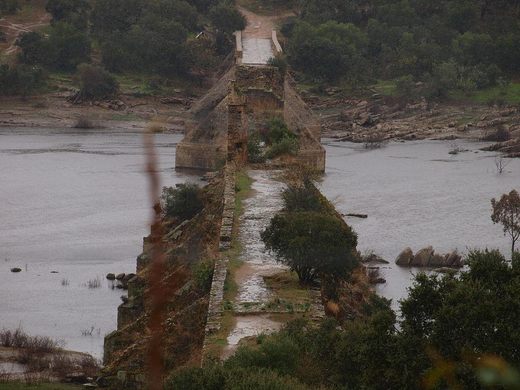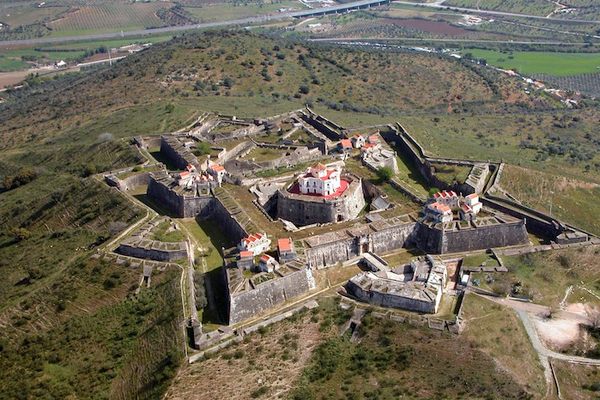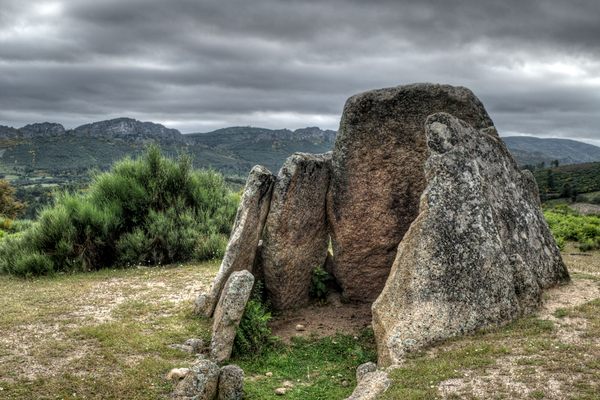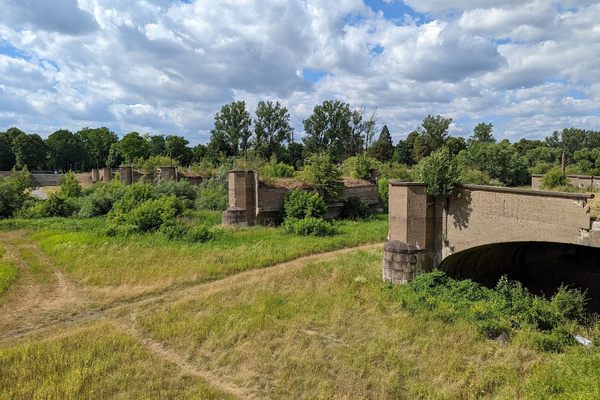AO Edited
Ponte da Ajuda (Ajuda Bridge)
The ruins of a 16th-century bridge loom over Olivença's sovereignty.
The Ajuda Bridge (Nossa Senhora da Ajuda Bridge or Olivença Bridge) is a ruined bridge located on the right bank of the Guadiana River, in the municipality of Elvas. This structure is full of history and intrinsically linked to the Olivença dispute and the conflicts between Portugal and Spain.
The bridge’s construction dates back to 1510 and as early as 1597 two of the central arches collapsed due to heavy flooding of the river. In 1641, it was repaired and raised platforms were installed to replace the damaged arches, but in 1646 the Castilian army destroyed the bridge, which was repaired at the end of the War of Restoration. In 1709, in a new conflict between Portugal and Spain, the Castilian army blew up the bridge, cutting the connection between Elvas and Olivença once again. The bridge has been in that state ever since.
This connection over the Guadiana River was 380 meters long and 5.5 meters wide and supported by 19 arches, eight of which survive on the right bank and five on the left bank. The bridge was defended by a three-story turret located approximately in the middle of the bridge, part of which is still visible.
Olivença was never recognized by Portugal as a territory of Spain and, therefore, in 1994 the Portuguese government refused the Spanish proposal of a joint effort to build a new bridge over the Guadiana River. In 2000, a new bridge was inaugurated, built a few meters away from the Ajuda Bridge, financed entirely by the Portuguese government.
As a curiosity, those crossing the new bridge in the Portugal-Spain direction can see a sign indicating the beginning of Spanish territory at the end of the bridge, but in the Spain-Portugal direction, there is no sign indicating the beginning of Portuguese territory, a clear indication that Portugal does not officially recognize Olivença as Spanish territory.
Know Before You Go
You can access the bridge from both sides of the river by car. On the right margin, there is a car park and also the Chapel of Nossa Senhora da Ajuda. On the left side, you can drive your car until the end of the road and then there is a small dirt trail leading up to the bridge itself.
You can walk on top of the bridge on both sides but be careful not to fall in the river. In the summer, when the water volume drops you can also walk below the arches on the right side of the river.

















Follow us on Twitter to get the latest on the world's hidden wonders.
Like us on Facebook to get the latest on the world's hidden wonders.
Follow us on Twitter Like us on Facebook